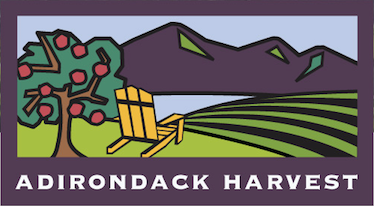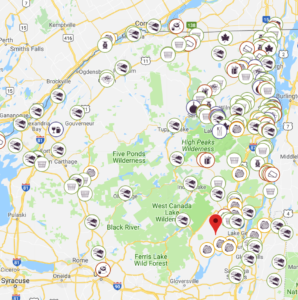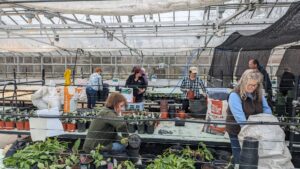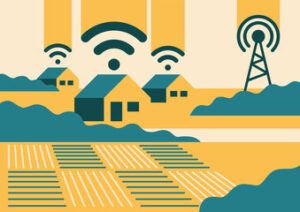July 22 – 28, 2019
The Challenge: To ONLY eat food that has been grown within a 100-mile radius of your home. This includes breakfast, lunch, dinner, dessert, beverages, or any snacks you may eat! Don’t worry, we will email you a locavore toolkit on July 15th for your dining needs, such as recipe ideas, local purchasing guides, local cooking and baking substitutes, educational resources about the local agriculture scene, and other useful materials to make your challenge fun and successful.
Click here to sign up.
How to Achieve Locavore Victory:
Do’s: Eat and drink food grown or produced within 100 miles of your home. This includes vegetables, fruits, eggs, dairy, meat, grains, bakery products, and beverages.
- Find local products will be your local farmer’s markets or farm stores, local co-ops or natural food stores, or other local retailers.
- Read all of the ingredients. If you are trying to purchase value-added products or locally processed foods to be sure they are sourced locally from a reputable source, like the Hub on the Hill.
- When in doubt, just ask your farmer/retailer where their products were grown or produced. Beware of natural products that are from out of your radius!
- Just because it’s healthy, doesn’t mean it’s local.
Dont’s: You should avoid products that are grown outside of your 100-mile radius, imported products, processed snacks with additives, food that cannot be tracked to its origin. That means no mainstream, conventional products that you may find at a chain grocery store that contain added non-local sugars, fats, and oils.
- Imported products,
- Products of unknown origin,
- Condiments that aren’t from a local processor,
- No eating out at chain restaurants,
- Anything that is grown more than 100 miles from your front door.
Are there exceptions?
The Locavore challenge is intended to be a fun, exciting challenge to learn about local agriculture and raise awareness about your food sources and local purchasing. Try your best to stick to all local – it’s only a week!
You may choose to allow yourself 2 exceptions.
For example, you could choose to allow yourself rice and coffee as exceptions. Try to research the sources of these exceptions. There may be ways that you can support a local coffee roaster or small business that sells these products. Be conscious and creative about your diet!
Tip: Write your exceptions down, so that you don’t feel the urge to add new ones throughout the week!
Tips
Substitute staples with local alternatives.
For example, find a good swap for your spoonful of sugar in your morning coffee with local honey or maple syrup. Think about using lard, tallow, or butter from a local farm instead of cooking with olive oil! Who knows… you may find that you like these substitutes even more! If you find a great substitute, we encourage you to share it in the Locavore Facebook event page so that your neighbors and friends can use your helpful tips. It’s important to be prepared for this week of local eating so that you are not tempted to break the rules!
Plan your week ahead of time.
It’s important to be prepared for this week of local eating so that you are not tempted to break the rules! Don’t worry, we will email you a locavore toolkit on July 15th to help you plan your week. Have your groceries fully stocked at the beginning of the week, and your snacks prepared ahead of time. This way, you won’t find yourself hungry, tired, and trying to come up with a local meal on the spot!
Find a Locavore buddy!
Encourage your spouse, family, friends, and co-workers to sign onto the challenge. Having support and bouncing ideas off of each other can be a great way to try new recipes, and have someone to hold you accountable to the challenge.
Here’s the link to sign up; share the challenge with your buddy: http://eepurl.com/gpAF49
Ready, set, go Locavore!
Locavore Toolkit
See and post more recipe ideas and tips in the AdkAction Locavore Challenge Event Page on Facebook!
Where to find local products:
Adirondack Harvest is a fantastic local resource for finding farmers and producers in the area. Click the links below to find your local farmers’ markets:
And to see farms, farm stores, and other l0cal food outlets, visit Adirondack Harvests’s map:
Shopping List
Vegetables
Greens, spinach, kale, swiss chard, peas, beans, tomatoes, cabbage, fennel, cucumbers, zucchini, and anything else that looks good from your local farmers!
Fruits
Strawberries, Blueberries, Raspberries, Pineberries, Peaches (from downstate farms, but still within 100 miles!), Apples (local apples are from last season at this time, but still very delicious!)
Meat
Chicken, beef, pork and more, whatever suits your fancy from you local meat producer.
Eggs
Chicken and duck eggs are widely available throughout the region and make great meals and snacks to help round out a locavore diet.
Dairy
Local milk, cheese, and yogurt are widely available. Check out Adirondack Harvest’s list of great local dairy producers: https://adirondackharvest.com/browse/?um_search=1&submitted=dairy
Bread, etc
This category is the most difficult for locavores. Luckily, we do have some local flour options and several local bakers! Triple Green Jade, Bliss and Vinegar, Dogwood, and Crown Point Bakery are a few good examples, or try to find a new local baker in your area! See some options here: https://adirondackharvest.com/browse/?um_search=1&submitted=bread
Condiments
Catchup, mustard, kimchi, pickles, hot sauce, and more are available from The Hub on the Hill. Not only are all of their condiments locally made, but the ingredients inside are also locally grown! To up your probiotic game, try fermented foods from Small Town Cultures.
Menu Idea Board
July 22-28th


North Country Product Availability
As we know, the North Country summers can be short and sweet. But did you know that you can get local produce year-round? Check out these local availability cheat sheets to see which products you can purchase throughout the year.



How to make your own local salad dressing:

**Tip** Use local sunflower oil from Reber Rock Farm to stay within the Locavore guidelines
Choose your fat:
Local Sunflower oil (Reber Rock Farm)
Plain yogurt (may want to cut this amount and combine with an additional oil)
Choose your acid:
Local Apple Cider Vinegar (NY and VT brands are widely available)
Choose your seasonings:
Garlic
Onions (puree or make a paste, or use a powder form)
Ginger (crush to make a paste)
Black pepper
Herbs (fresh or dried)
Parmesan cheese
Honey
Maple
Shake it up!
In a mason jar (with a lid), combine:
Use the 2:1 ratio to add your chosen fats and acids (2 parts fat, 1 part acid), salt to taste, and your chosen seasonings
Experiment with the different seasonings and oils to find your favorite combinations! Close the jar and shake it until the dressing is uniform (no longer has separate layers). Taste- you may need to add more fat if the dressing is too sour, or more acid if the dressing feels too oily or thick!
How to make your own croutons:

Don’t let your stale bread go to waste, especially if it was locally made with love! Croutons are a great way to repurpose loaves that are on the way out the door.
1 loaf of bread and ⅓ cup of sunflower oil
Cube the bread into inch sized pieces. Toss the bread cubes with sunflower oil, then spread them evenly onto a baking sheet. Toast for 18-22 minutes, and rotate the croutons to brown evenly on all sides. Bake until all sides are golden brown. Remove from the oven and season with salt, and herbs. Preheat oven to 400 degrees F.
Why go locavore?
There are many Benefits of Eating Local that ripple out from your own personal health to your family, community, and the planet. Here are just a few of the benefits, from Moneycrashers.com:
1. Local Usually Tastes Better
Local food is fresher food! Many of the fruits and vegetables at large chain supermarkets are already weeks or months old by the time they reach your table. Sometimes, such produce is picked before it is fully ripe and subjected to artificial ripening with chemicals. By contrast, when you shop at a farmers market, most of the food for sale has been picked within the past day. It comes to you fresh from the field, at the peak of its ripeness and flavor.
2. More Variety
The produce you find in supermarkets is typically limited to a few well-known varieties, chosen for their yield and how well they can stand up to long shipping and storage times. However, farmers who sell their food locally can choose their crops based on taste, nutrition, or how well they grow in the local environment. LocalDiet.org reports that while supermarkets typically offer just two or three varieties of pears, small farms across the country grow nearly 300 varieties. Local farms also grow less common crops that you can’t find at all in most supermarkets, such as sunchokes, purslane, and tayberries.
3. Improved Nutrition
Fresher food doesn’t just taste better – in many cases, it’s also better for you. A 2007 article from the Harvard School of Public Health notes that many fruits and vegetables, including tomatoes, peppers, and peaches, contain more nutrients when they’re allowed to ripen fully on the plant before picking – something that doesn’t always happen with supermarket produce. In addition, the food grown on big industrial farms isn’t always as nutritious as the less common varieties grown on local farms. A 2007 paper by the Organic Center finds that for many common crops, including wheat, corn, and broccoli, the highest-yielding varieties have lower levels of nutrients than older varieties with lower yields.
4. Food Safety
One problem with having our country’s food production concentrated in the hands of just a few big agribusinesses is that an outbreak of foodborne illness at just one site can affect thousands, if not millions, of people. And because food from one site gets delivered to many different parts of a country, it’s hard to trace an outbreak to its source and stop it effectively. Foodborne illness is particularly likely to strike industrial meat producers because they tend to rush animals through slaughter and processing as rapidly as possible, which makes it harder to safeguard the meat against bacteria. Eating food from local farms helps reduce our nation’s dependence on the biggest growers, so a single outbreak of foodborne illness is less likely to turn into a major disaster.
5. Food Security
Another problem with relying on a few big growers to supply our nation’s food is security. A natural disaster that disables just one farm could create food shortages across the entire country. Supporting local growers helps spread out our food production, so a single disaster can’t cripple our food system. It also helps make fresh food available in all parts of the country.
6. Environmental Benefits
Local food doesn’t just travel a shorter distance to reach your plate – it’s also more likely to come from small family farms that are run in a sustainable way. Compared to large industrial farms, small local farms are more likely to grow multiple crops, plant cover crops, and leave hedges to provide a habitat for wildlife, according to the Worldwatch Institute. Many local farms also use organic farming practices, even if they don’t meet the standards for organic certification. Organic farms use less water and fewer harmful chemicals, and they tend to have a lower carbon footprint than conventional farms.
7. More Knowledge
When you buy a chicken or a bag of apples at the supermarket, you know very little about how the chicken was raised or how the apples were grown. However, when you buy directly from a local farmer at a farmers market, you can ask any questions you have. You can find out whether the chicken is free-range, what kind of food it ate, what types of pesticides were used on the apples, and how the workers who picked them are treated. Many locavores say that for them, knowing where their food comes from and having a direct relationship with the growers is the most valuable part of eating local.
8. Helping Your Local Economy
Eating locally grown food is a way to support your local economy. When you hand your food dollars to a local farmer rather than a big, distant corporation, that farmer is much more likely to hand those same dollars over to other local businesses for things like seeds, supplies, and machinery. Small farmers are also more likely to send their food to local stores and local restaurants, supporting more jobs in your community. And finally, supporting family farms helps keep them in business, so all those green fields don’t get sold and paved over to build new condominiums and shopping malls.
Ready, Set, Go Locavore!
Contact [email protected] with questions about the challenge.






